Table of Contents
Plot
Welcome to The Mandalorian S1 E6 Review. In this episode, the Mandalorian, also known as Din Djarin, is contacted by a former associate named Ranzar Malk. Ranzar offers Din a job to break a prisoner out of a New Republic prison ship. Despite his reservations about working with the crew, Din accepts the job due to the substantial payment promised.
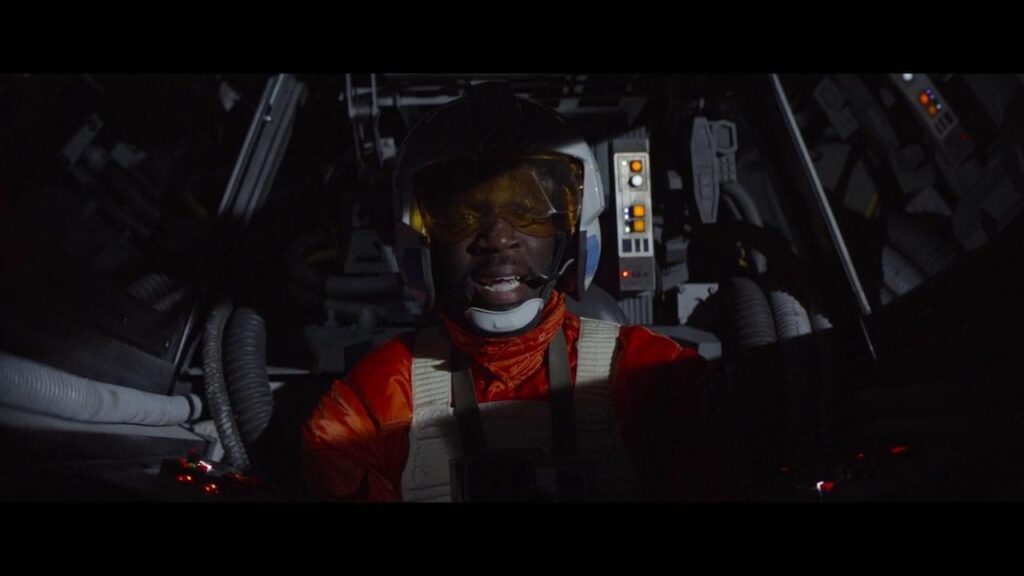
Storyline:
The episode begins with Din Djarin receiving a holographic message from Ranzar Malk, a man he used to work with in the past. Ranzar presents a lucrative opportunity: a mission to rescue a Twi’lek prisoner from a New Republic prison ship. Ranzar assembles a crew for the job, including Mayfeld, a sharpshooter; Xi’an, a Twi’lek thief and Ranzar’s former flame; Burg, a strong Devaronian; and Zero, a droid pilot.
Din is initially wary of the crew due to their criminal backgrounds, but he agrees to the mission because of the large payment offered. They provide him with the necessary information and head to the prison ship. Upon arrival, Din raises concerns about the crew’s disregard for human life, which immediately creates tension among them.
As the crew infiltrates the prison ship, each member showcases their unique skills. Mayfeld uses his sharpshooting abilities, Xi’an employs her agility and combat skills, Burg demonstrates his strength, and Zero pilots the ship remotely. Din uses his Mandalorian gear and combat skills to neutralize the New Republic security droids and guards.
The group eventually locates the Twi’lek prisoner, Qin, but it becomes clear that Ranzar has ulterior motives. It is revealed that they actually plan to leave Qin behind and destroy the ship, eliminating any witnesses. At this point, Din realizes he’s been double-crossed and decides to rescue Qin against the crew’s wishes.
A confrontation ensues between Din and the crew members. He outsmarts them using his Mandalorian wit and combat prowess. After defeating the crew members one by one, Din leaves them incapacitated on the prison ship and delivers Qin to the New Republic authorities, ensuring his capture.
Returning to his ship, the Razor Crest, Din receives a transmission from Ranzar, who survives the encounter and acknowledges Din’s resourcefulness. The episode ends with Din departing from the prison ship, having once again navigated a treacherous situation.
“The Prisoner” explores themes of trust, loyalty, and moral ambiguity. Din’s interactions with the crew highlight the contrast between his code of honor and their criminal attitudes. The episode also delves into Din’s growth as he makes choices that align with his principles, ultimately choosing to do what’s right despite the temptation of a significant reward.
In conclusion, “The Prisoner” is an action-packed episode that showcases the Mandalorian’s resourcefulness and sense of justice. It serves as a standalone story within the series while contributing to the overarching narrative of Din Djarin’s journey through the galaxy.
character development
Din Djarin (The Mandalorian):
In this episode, we witness Din’s growth and steadfast adherence to his personal code of honor. Right from the start, he’s hesitant to work with the crew of criminals, reflecting his desire to maintain a certain level of ethics in his line of work. This initial reluctance highlights his sense of morality and loyalty to his values.

As the mission unfolds, Din’s suspicions about the crew’s intentions are confirmed when he discovers that they plan to abandon the prisoner and destroy the ship to cover their tracks. This revelation becomes a turning point for Din’s character development. Despite the potential for a significant payout, Din chooses to rescue the Twi’lek prisoner, Qin, against the crew’s wishes.
This decision showcases Din’s growth as a character. He not only shows compassion and empathy for Qin’s situation, but he also demonstrates his willingness to make morally right choices, even when faced with difficult circumstances. His actions highlight his transition from a lone bounty hunter motivated purely by profit to someone with a growing sense of responsibility and justice.
Furthermore, Din’s interactions with the crew members reveal his resourcefulness and strategic thinking. He outsmarts each member of the crew one by one, displaying his combat prowess and clever tactics. This reaffirms his reputation as a skilled and intelligent Mandalorian.
Ranzar Malk and the Crew:
The crew members introduced in this episode provide contrast to Din’s character and serve as foils that highlight his virtues. Ranzar Malk, the leader of the crew, represents the self-serving and ruthless nature of the criminal world. His double-crossing of Din and willingness to sacrifice others for personal gain underline his lack of moral integrity.
The other crew members also contribute to Din’s character development by demonstrating the darker side of the bounty hunting profession. Mayfeld’s cold and calculated approach, Xi’an’s aggression, Burg’s brutality, and Zero’s disregard for life all emphasize the choices that Din has made to be different from them.
Din’s interactions with the crew provide him with an opportunity to reflect on his own path and choices. By witnessing their actions, he is able to further solidify his own values and commitment to doing what’s right.
Conclusion:
In “The Prisoner,” episode 6 of “The Mandalorian,” we see significant character development for Din Djarin. His growth is marked by his refusal to compromise his principles, his compassionate decision to rescue the prisoner, and his adeptness at navigating complex and dangerous situations. The interactions with the crew members and his reactions to their choices help him define his own identity and reaffirm his commitment to being a Mandalorian of integrity in a morally complex universe.
visual effects and cinematography
Visual Effects:
1. Practical Effects and Puppetry: “The Mandalorian” is known for its blend of practical effects and puppetry reminiscent of the original Star Wars trilogy. In this episode, practical elements like costumes, makeup, and animatronics are used to bring various alien creatures to life, maintaining the tactile and authentic feel of the Star Wars universe.
2. CGI Environments: The episode features various CGI environments, from the interior of the New Republic prison ship to the exterior space sequences. These CGI backgrounds and settings seamlessly integrate with the live-action footage, creating a believable and expansive galaxy.
3. Spaceship Sequences: The space battles and scenes involving the Razor Crest and the New Republic prison ship showcase intricate CGI work, including the ships’ movement, detailing, and realistic interactions with light and space.
4. Droid Effects: The droid Zero’s movements and actions are realized through CGI, allowing for fluid and dynamic animations that add to the character’s menace and capabilities.
5. Blaster Effects and Explosions: Blaster shots, explosions, and other action-related effects are digitally enhanced to create the signature Star Wars action sequences. These effects contribute to the excitement and intensity of the episode’s action scenes.
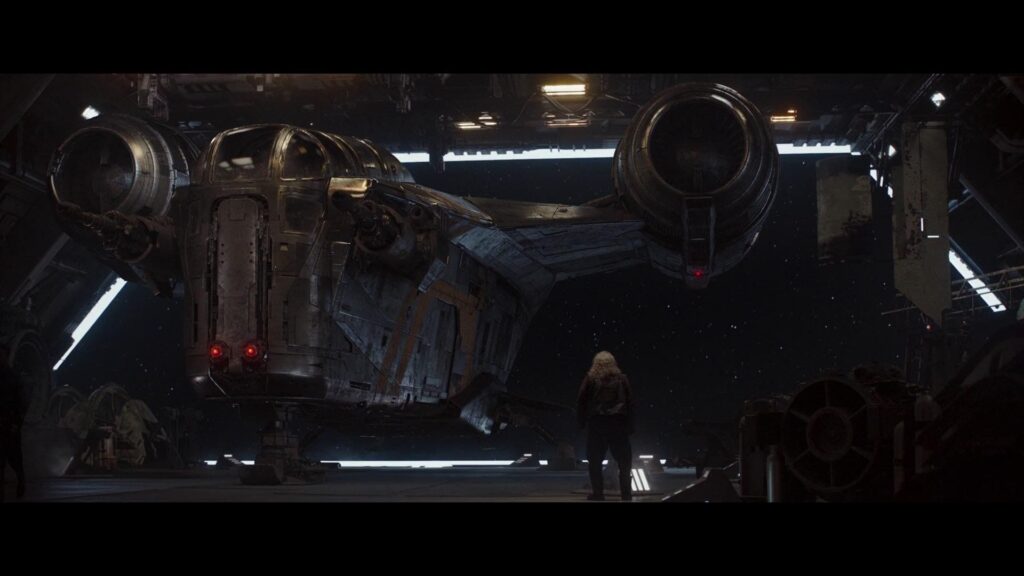
Cinematography:
1. Atmospheric Lighting: The cinematography of “The Mandalorian” is known for its atmospheric lighting, which adds depth and mood to the scenes. In this episode, the lighting sets the tone for the prison ship’s grim and tense atmosphere.
2. Wide Shots and Set Design: The wide shots of various locations, such as the interior of the prison ship and the desert planet, showcase the intricate set design and attention to detail. These shots help establish the environment and immerse the audience in the world of “The Mandalorian.”
3. Action Choreography: The cinematography captures the dynamic action sequences with precision. Fast-paced movements, close-up shots of blaster fire, and creative camera angles contribute to the excitement and intensity of the action scenes.
4. Character Emphasis: The cinematography emphasizes character interactions and emotions through close-ups and well-composed shots. These visuals allow the audience to connect with the characters on a deeper level.
5. Seamless Transitions: The episode seamlessly transitions between practical sets, CGI environments, and live-action shots. These transitions contribute to the cohesive and immersive nature of the storytelling.
6. Color Palette: The color palette in “The Mandalorian” is rich and varied, with a mix of earthy tones and vibrant hues. This contributes to the show’s distinctive visual style and the sense of being in a diverse and visually captivating universe.
In conclusion, the visual effects and cinematography of “The Mandalorian” Episode 6, “The Prisoner,” showcase a blend of practical and digital techniques that enhance the storytelling and create a visually stunning experience. The attention to detail, innovative use of technology, and adherence to the Star Wars aesthetic contribute to the series’ overall appeal and success.
world-building
Introduction of New Locations:
1. Prison Ship: The episode introduces viewers to a New Republic prison ship, which serves as the primary setting for the mission. The interior of the ship is a confined and dimly lit space, adding to the tense atmosphere of the episode. The prison cells, control rooms, and corridors all contribute to the sense of confinement and danger.
2. Desert Planet: The episode also features a brief sequence on a desert planet, where the Razor Crest lands to deliver the Mandalorian’s crew. This location is portrayed through wide shots and establishes the variety of environments within the Star Wars universe.
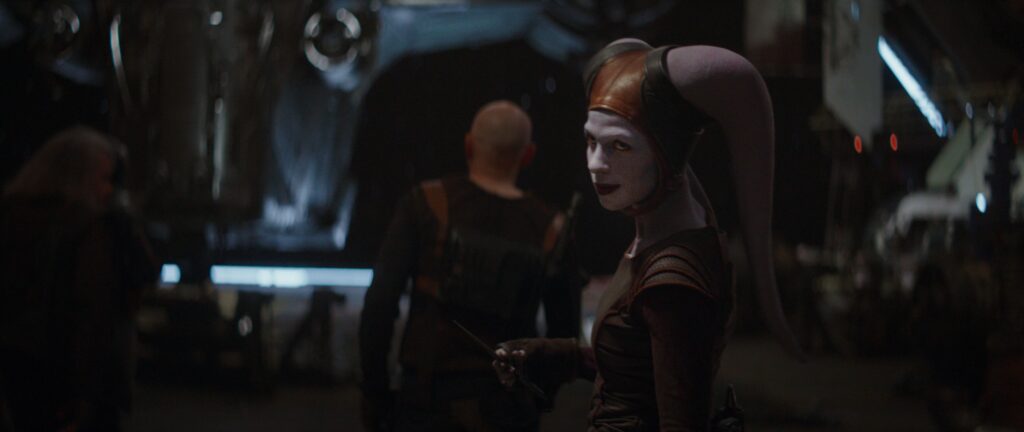
New Characters and Species:
1. Ranzar Malk: Ranzar is a former associate of the Mandalorian and the leader of the crew. He adds depth to the criminal underworld of the galaxy and provides insight into the Mandalorian’s past connections.
2. Crew Members: Mayfeld, Xi’an, Burg, and Zero are all members of the crew assembled for the mission. They represent different alien species and backgrounds, showcasing the diverse nature of the galaxy.
3. Qin: Qin is the Twi’lek prisoner the Mandalorian is tasked with rescuing. His presence introduces the audience to the plight of those caught up in the criminal justice system and provides a moral dilemma for the Mandalorian.
Criminal Underworld and Morality:
The episode delves into the criminal underworld of the Star Wars universe. It showcases the morality (or lack thereof) of characters who operate outside the law. Ranzar Malk’s willingness to double-cross and sacrifice others for personal gain highlights the darker aspects of this world.
Technological Elements:
1. New Republic Technology: The New Republic prison ship features advanced technology, such as security droids and surveillance systems. This showcases the technological progress in the Star Wars galaxy after the fall of the Galactic Empire.
2. Droid Pilot (Zero): The droid pilot, Zero, displays advanced piloting and hacking skills. His capabilities demonstrate the diversity of droid abilities and their roles within different contexts.
Interpersonal Dynamics:
The interactions and dynamics between the characters highlight the complexities of relationships in the Star Wars universe. The strained relationships among the crew members and their history with the Mandalorian provide insight into the complexities of the criminal underworld.
Ethical Choices and Consequences:
The episode explores ethical choices and their consequences. The Mandalorian’s decision to rescue Qin rather than abandon him reflects his moral compass and highlights his personal growth as a character.
Conclusion:”The Prisoner,” episode 6 of “The Mandalorian,” contributes to the series’ world-building by introducing new locations, characters, species, and technological elements. It provides a glimpse into the criminal underworld of the Star Wars universe, showcasing its diversity, moral complexities, and the challenges faced by its inhabitants. Through these world-building elements, the episode further immerses viewers in the expansive and intricate universe of “The Mandalorian.”
action and direction
Action Sequences:
1. Prison Ship Infiltration: The episode kicks off with the Mandalorian joining the crew in infiltrating the New Republic prison ship. This sequence showcases close-quarters combat as they stealthily take down guards and security droids. The action is intense, with blaster fire, hand-to-hand combat, and a variety of tactics employed.
2. Droid Takedowns: The Mandalorian faces off against New Republic security droids in the prison ship’s control room. The fight sequences highlight his resourcefulness as he uses various weapons and tools to defeat the droids.
3. Character Confrontations: As tensions rise among the crew members, there are confrontations that lead to action-packed fights. The Mandalorian’s battles against Mayfeld, Xi’an, Burg, and Zero each highlight his combat skills and strategic thinking.
4. Rescue Mission: The Mandalorian’s decision to rescue the Twi’lek prisoner, Qin, leads to an intense escape sequence. This includes firefights, narrow escapes, and a countdown to the ship’s destruction, adding to the suspense and excitement.

Direction:
1. Pacing and Tension: The episode’s pacing is well-controlled, with moments of tension building gradually. The director, Rick Famuyiwa, effectively uses suspense to keep the audience engaged and invested in the characters’ fates.
2. Character Interactions: The direction emphasizes the interactions between characters, allowing their personalities and conflicts to shine. The director crafts scenes that highlight the dynamics within the crew and between the Mandalorian and Qin.
3. Visual Storytelling: Through visual cues and staging, the director conveys information about characters and their relationships without relying heavily on exposition. This adds depth to the storytelling and encourages audience engagement.
4. Action Choreography: The director orchestrates the action sequences with precision, ensuring that each fight is visually distinct and aligned with the characters’ skills and personalities. The choreography enhances the excitement and contributes to the character development.
5. Use of Lighting and Atmosphere: The director employs lighting and atmosphere to create distinct moods. The dimly lit interior of the prison ship contrasts with the desert planet’s harsh sunlit environment, underscoring the different settings and atmospheres.
6. Character Moments: The director focuses on character moments to evoke empathy and understanding from the audience. Close-ups and well-framed shots capture the emotions and decisions of the characters, allowing viewers to connect with them on a deeper level.
Conclusion:
In “The Prisoner,” episode 6 of “The Mandalorian,” the action sequences are exhilarating and skillfully directed, enhancing the episode’s overall excitement and engagement. The director’s attention to pacing, character dynamics, and visual storytelling contributes to the episode’s success in delivering both thrilling action and character-driven storytelling. The direction ensures that each action sequence is not only a display of skill but also a means to advance the characters’ growth and the narrative as a whole.
music and sound design
Music:
The music for “The Mandalorian” is composed by Ludwig Göransson, and his work has become a defining feature of the show’s identity. In “The Prisoner,” Göransson’s score continues to blend iconic Star Wars themes with original compositions, creating a unique sonic landscape.

1. Themes and Motifs: Göransson’s score weaves in recurring themes and motifs associated with the Mandalorian, both as a character and as a symbol. The main theme, characterized by its distinctive blend of Western and space opera elements, is present throughout the episode and underscores key moments.
2. Mood Enhancement: The music enhances the mood of various scenes. For instance, during intense action sequences, the score becomes more frenetic, heightening the tension and excitement. In moments of reflection or character interaction, the music becomes more introspective, conveying emotion and depth.
3. Character Moments: Göransson’s music provides a musical backdrop to character moments and interactions. It complements the emotional arcs of the characters, such as the Mandalorian’s decision to rescue Qin, adding a layer of depth to their experiences.
4. Incorporating Familiar Elements: While “The Mandalorian” has its own original score, Göransson skillfully incorporates familiar Star Wars themes and motifs, connecting the series to the broader universe. These callbacks serve as moments of nostalgia for fans while still maintaining the show’s distinct identity.
Sound Design:
The sound design in “The Mandalorian” is intricate and immersive, creating a world that feels rich and textured.
1. Blaster Sounds: The distinct sounds of blasters firing are an iconic part of the Star Wars universe. In “The Prisoner,” the blaster shots are expertly designed to match the intensity of the action sequences.
2. Spaceship and Engine Sounds: The sound of the Razor Crest’s engines and the New Republic prison ship’s systems contribute to the immersion, making the spacecraft feel tangible and functional.
3. Alien Creatures: The episode introduces various alien creatures, each with its own unique vocalizations and sounds. These sounds enhance the realism of the creatures and help establish the diverse ecosystems within the galaxy.
4. Droid Sounds: The sound design for droids, such as Zero, includes mechanical movements, beeps, and vocalizations that give them distinct personalities and traits.
5. Environmental Ambiance: The sound design incorporates the ambient sounds of various locations, from the confined spaces of the prison ship to the windswept desert planet. These sounds help create a sense of place and enhance the viewer’s immersion.
Conclusion:
In “The Prisoner,” episode 6 of “The Mandalorian,” the music and sound design work in tandem to create a rich and immersive experience. Ludwig Göransson’s score provides emotional depth and thematic continuity, while the sound design captures the details of the Star Wars universe, from blaster fire to alien creature sounds. Together, these elements contribute to the show’s cinematic quality and help transport the audience into the galaxy far, far away.
pacing and episode structure
Explore a daring mission with ‘The Mandalorian’ in Episode 6. Our review delves into alliances, risks, and unexpected turns. Don’t miss out!”
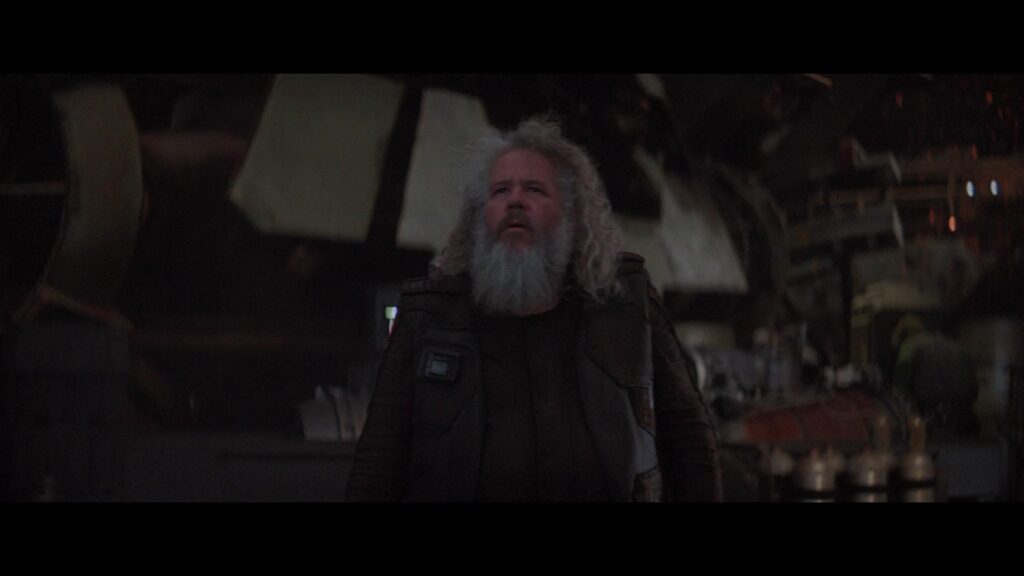
“The Prisoner” features a well-crafted pacing that balances action-packed sequences with moments of character development and tension. The pacing keeps the audience engaged and invested throughout the episode:
1. Opening Intrigue: The episode begins with a holographic message from Ranzar Malk, introducing the mission and setting the premise. This immediately captures the viewer’s attention and raises questions about the Mandalorian’s past and his relationship with Ranzar.
2. Build-up: As Din Djarin (the Mandalorian) meets the crew and prepares for the mission, the tension slowly builds. The interactions between characters, their histories, and the Mandalorian’s reservations create a sense of unease that underpins the impending mission.
3. Infiltration and Action: Once aboard the New Republic prison ship, the pacing picks up as the crew begins to execute their plan. The action sequences, involving stealthy takedowns of guards and security droids, add excitement and intensity to the episode.
4. Tension Escalation: Tensions within the crew rise as their true intentions become clear. The pacing allows for the gradual escalation of conflict, as individual characters’ motivations clash and suspicions mount.
5. Rescue Mission and Escape: The pacing accelerates further during the rescue mission, with intense blaster fire, close calls, and a race against time. This fast-paced sequence keeps the audience on the edge of their seats.
6. Character Moments and Resolution: After the action climax, the pacing slows down to allow for character moments and resolution. These moments offer a breather and give the characters space to reflect and make key decisions.
Episode Structure:
The episode follows a structured format that balances character development, action, and intrigue:
1. Introduction and Mission: The episode opens with a holographic message from Ranzar Malk, introducing the mission to the Mandalorian. This establishes the central conflict and goal of the episode.
2. Gathering the Crew: The Mandalorian assembles the crew for the mission. Each crew member is introduced, showcasing their skills and personalities. This section sets up the dynamics and conflicts within the group.
3. Infiltration and Discovery: The crew infiltrates the New Republic prison ship, leading to action-packed sequences and tense moments. As they progress, the true nature of their mission is revealed, creating a central conflict for the episode.
4. Rescue Mission and Escape: The Mandalorian’s decision to rescue Qin leads to an intense rescue and escape sequence. The crew’s dynamics reach a breaking point as their motivations clash.
5. Character Resolution: After the climax, the pacing slows down for character moments. The resolution involves Din Djarin delivering Qin to the New Republic authorities and dealing with the aftermath of the mission.
Conclusion:
The pacing and episode structure of “The Prisoner,” episode 6 of “The Mandalorian,” effectively balance action, character development, tension, and resolution. The structured format allows for a dynamic and engaging narrative that keeps the audience invested in the story’s twists and turns. The well-paced sequences contribute to the overall excitement and immersion of the episode, making it a memorable part of the series
originality and innovation
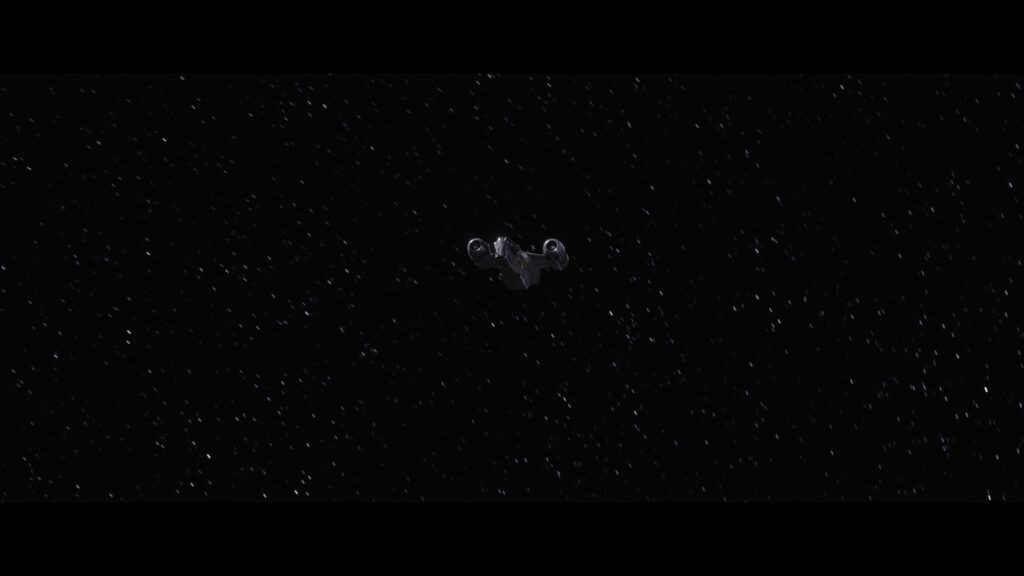
Originality:
1. Criminal Underworld Focus: “The Prisoner” offers a unique perspective by delving into the criminal underworld of the Star Wars universe. The episode focuses on the Mandalorian’s interactions with a crew of criminals, providing a different angle on the galaxy’s inhabitants and their activities.
2. Character Dynamics: The episode explores the complex dynamics among the Mandalorian and the crew members he partners with. The diversity of personalities, species, and motivations adds depth to the story and offers fresh character interactions.
3. Morality and Choices: The episode raises moral questions about choices and consequences. The Mandalorian’s decision to rescue Qin, despite the crew’s intentions, showcases his personal growth and sets him apart as a character driven by his own code of honor.
4. Character Depth Through Flashbacks: Through a brief but impactful flashback, the episode offers a glimpse into the Mandalorian’s past. This is a departure from the linear storytelling, providing layers to the character’s motivations and history.
Innovation:
1. Genre Fusion: “The Prisoner” blends elements of heist films and action-adventure with the Star Wars universe. The episode takes on a unique tone within the series by incorporating a “caper” plot, where the Mandalorian and his crew execute a high-stakes mission.
2. Character-Centric Storytelling: This episode places a significant focus on character development and interactions, allowing characters like Ranzar Malk and the crew members to take center stage. This humanizes them and adds depth to the narrative.
3. Moral Ambiguity: The episode adds moral complexity by showcasing the Mandalorian’s interactions with characters whose motives and ethics differ from his own. This creates thought-provoking scenarios and emphasizes that not all choices are clear-cut in this universe.
4. Tension and Suspense: The episode builds tension through the characters’ interactions and the anticipation of the mission’s outcome. The innovative use of suspense contributes to the overall intrigue and engagement of the story.
5. Combining Familiar Elements: While offering fresh content, “The Prisoner” incorporates familiar Star Wars themes, motifs, and iconic visual elements that resonate with fans while still expanding the universe.
Conclusion:
Episode 6 of “The Mandalorian,” titled “The Prisoner,” stands out for its originality and innovative storytelling within the Star Wars universe. By exploring the criminal underworld, presenting complex character dynamics, and introducing moral ambiguity, the episode takes familiar elements and approaches them from new angles. The innovative genre fusion, character-driven narrative, and thought-provoking scenarios all contribute to the series’ reputation for pushing boundaries and expanding the Star Wars universe in exciting ways.
FAQs
Who are the main guest stars in this episode?
The guest stars include Bill Burr as Mayfeld, Natalia Tena as Xi’an, Clancy Brown as Burg, Richard Ayoade as Q9-0 (“Zero”), and Mark Boone Junior as Ranzar Malk
Are there any Easter eggs or references to the larger Star Wars universe in this episode?
Yes, there are subtle references to previous Star Wars films and TV shows, as is common throughout “The Mandalorian” series.
How does this episode explore the Mandalorian’s code and beliefs?
The episode highlights the Mandalorian’s adherence to his code while also showing his willingness to bend it for certain situations.
